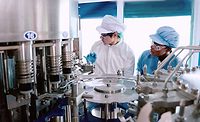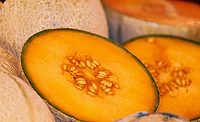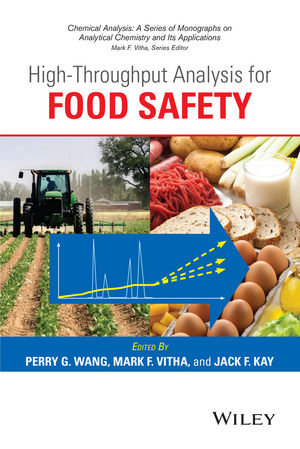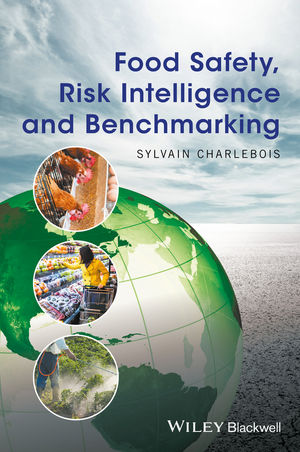Risk Analysis: Pests Need It Too

In many cases, the typical response to questions about pest control is to hire a vendor to place rodent traps and install a few flying insect monitoring devices. Unfortunately, many times, thorough Hazard Analysis and risk assessment activities are not really performed and unanticipated pest problems appear. In fact, in the farm setting, pest risk assessment is usually not a priority except in the context of crop protection.
Rather than describe various pests, their health importance and their control in food production, let’s address the concept of pest Hazard Analysis. The U.S. Food and Drug Administration (FDA) has heavily emphasized Hazard Analysis and science-based risk assessment.[1] In FDA’s proposed Standards for the Growing, Harvesting, Packing, and Holding of Produce for Human Consumption Rule, the agency states that it will require farming operations (Section 112.128) to “take measures reasonably necessary to protect covered produce, food-contact surfaces, and food-packing materials from contamination by pests in buildings, including routine monitoring for pests as necessary and appropriate.” Note the use of the phrase “reasonably necessary,” which is purposely used to allow the producer latitude in selecting an appropriate response. It also places the burden of defining the proper response on the producer. This approach is only logical in that no regulatory agency can dictate specific procedures that will function in all cases, as each production entity is unique. Further, the actual definition of a pest, as proposed by FDA, is quite nebulous—“Pest refers to any objectionable animals or insects including birds, rodents, flies, and larvae.”
Similarly, the Current Good Manufacturing Practice and Hazard Analysis and Risk-Based Preventive Controls for Human Food Proposed Rule also includes stipulations regarding pest control. Section 117.35(c) would require “Pests must not be allowed in any area of a food plant. Guard or guide dogs may be allowed in some areas of a plant if the presence of the dogs is unlikely to result in contamination of food, food-contact surfaces, or food-packaging materials. Effective measures must be taken to exclude pests from the manufacturing, processing, packing and holding areas and to protect against the contamination of food on the premises by pests. The use of insecticides or rodenticides is permitted only under precautions and restrictions that will protect against the contamination of food, food-contact surfaces, and food-packaging materials.” Again, no specific procedures are dictated, and the onus is on the manufacturer to determine the appropriate response.
With the emphasis in food safety placed upon Hazard Analysis and risk assessment by FDA, it is imperative that the producer or manufacturer utilize these concepts when addressing pest control. The first reaction of the producer or manufacturer may be frustration—one more thing to do that eats up time. However, the reality is that the principles are the same and can be applied to this requirement. If the entity doesn’t have the expertise to conduct the Hazard Analysis and risk assessment for pests, then enlist a qualified professional. Just be sure that the professional can really perform the analysis and assessment tasks—not just place some traps and consider the job complete.
Hazard Analysis
In any food safety plan, Hazard Analysis is critical. Water, food contact surfaces and products are tested to ascertain bacterial levels and chemical presence. Physical contaminants are monitored as well. The actual impact of pests must also be determined.
To conduct a pest Hazard Analysis, one must know what activities are required to complete the task. Hazard Analysis usually comprises risk assessment, risk management and risk communication.[2] It is a continuous interactive process that must be routinely evaluated, reviewed and modified. Production and manufacturing activities change, impacting the activity of pests, and creating or eliminating problems.
Risk Assessment
To initiate the process, one must perform a risk assessment regarding actual and potential pests.[3] A risk assessment includes interactive components such as hazard identification (what pests are or may be present), hazard characterization (what potential adverse health effects may occur), exposure potential (the likelihood that exposure will create a health problem) and risk characterization (is the risk significant). One could spend time performing complex risk characterization schemes, but they aren’t really needed for pest management. Essentially, FDA has said, “No pests are allowed,” so merely initiate and routinely perform the procedures required to minimize pests to the greatest extent possible.
Begin the assessment at the perimeter of the property. Observe what is adjacent to your property. For example, is there an egg-producing facility next door? What do they do with their manure? Do you see flies that may travel to your operation? Do you see animal feces in your field? Do you see animals foraging in your field? Are fences present to minimize entry? Is there debris present that can provide harborage for animals or insects? What creatures, large and small, do you see? If needed, place some surveillance devices. Pest activity frequently occurs when humans are fast asleep. Record your observations on the proper forms.
Observe your buildings up close. Are birds making nests in the eaves? Do you see ants moving along walls? Are there rodent burrows by the foundation? Do you see flies resting on walls? Are lizards crawling about? Are any pests hiding in that delivery truck? Is vegetation growing against the walls? Are pallets stored against the walls? Again, place some surveillance devices where possible. Record your results properly. Now move inside the building. Is there evidence of rodents along the walls? Are spider webs present? What creatures are trapped in the webs? Do you see cockroaches hiding in dark areas? Did someone inspect the raw ingredients or food packaging upon arrival to determine if pests were present? Use surveillance devices to determine pest activity when no one is present. Record your findings. Remember this phrase: If it’s not documented, it never happened!
Risk Management
Once the risk assessment is complete, the results can be evaluated to determine what type of management strategies are needed to address the actual and potential problems. For pest management, this step is normally well established and based upon integrated pest management procedures. Control measures can include habitat modification (remove a debris pile), exclusion (seal openings), trapping (live and fatal), bio-control and chemicals (pesticides). The trick is to apply the best method in the correct place. Ensure pest control operators have the required licensing and insurance, and are experienced in your type of operation. A good pest control operator is imperative to achieve this goal. As with anything else, poor execution yields poor results.
Pest control is just one aspect of the management plan. The activities must be routinely monitored, reviewed and amended to ensure the control measures are needed and are functioning as intended. If that egg-producing facility mentioned earlier moves away, maybe the fly monitoring and control procedures can be reduced or eliminated. To ensure the activities required for the pest control program are monitored and reviewed, the producer or manufacturer needs to assign that responsibility to a qualified staff member, even if an outside vendor is utilized. In addition, ensure that the primary staff member has a backup person who is similarly qualified. The company also needs to have a written pest control policy that reflects its commitment to pest management.
Risk Communication
Without adequate communication, a pest management plan is doomed to failure. It does no good to have a pest control operator perform various tasks if the results are not communicated to the responsible party, or that party never relates the problems to management. As with any aspects of food safety, every employee should be willing and able to convey their observations to supervisors and other managers.
Risk communication is not confined to that which occurs within the company. Communication to external entities is imperative. These entities may be vendors, customers, regulatory agencies or the media. However, this communication must be performed by qualified persons who have been assigned this responsibility. Misinformation is ultimately worse than no information.
Conclusions
Pest management must be afforded the same level of importance as any other aspect of food safety. Attention tends to be focused on the threat of microbial contamination through water, food contact surfaces and human handling of food. However, pests are also wonderful vectors of microbial contamination. Fortunately, a little Hazard Analysis goes a long way in reducing the risks presented by pests.
Allan R. Pfuntner, M.A., R.E.H.S., is a food safety consultant with Hartono & Co. LLC and a regulatory expert on compliance and food safety. He has over 40 years of experience in pest control management.
References
1. www.fda.gov/NewsEvents/Newsroom/PressAnnouncements/ucm334156.htm.
2. www.fao.org/docrep/012/a0822e/a0822e00.pdf.
3. www.npmapestworld.org/documents/Foodplantstandards2010_000.pdf.
Looking for a reprint of this article?
From high-res PDFs to custom plaques, order your copy today!







